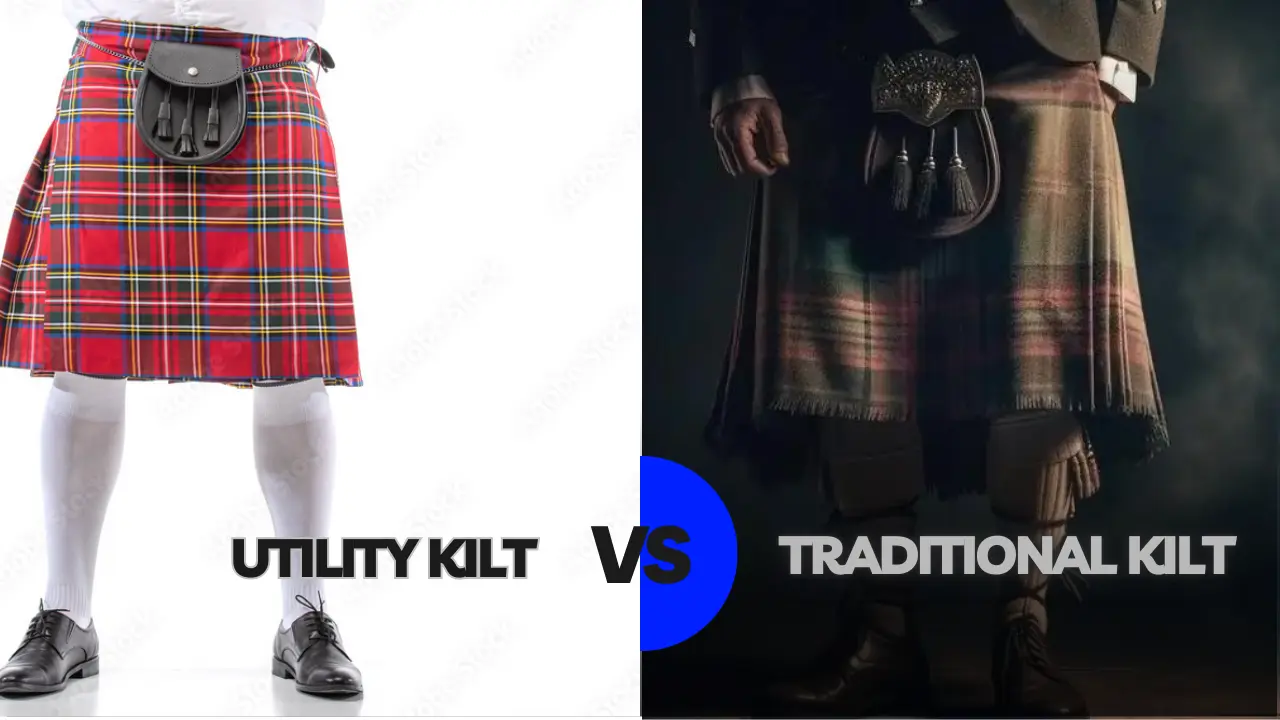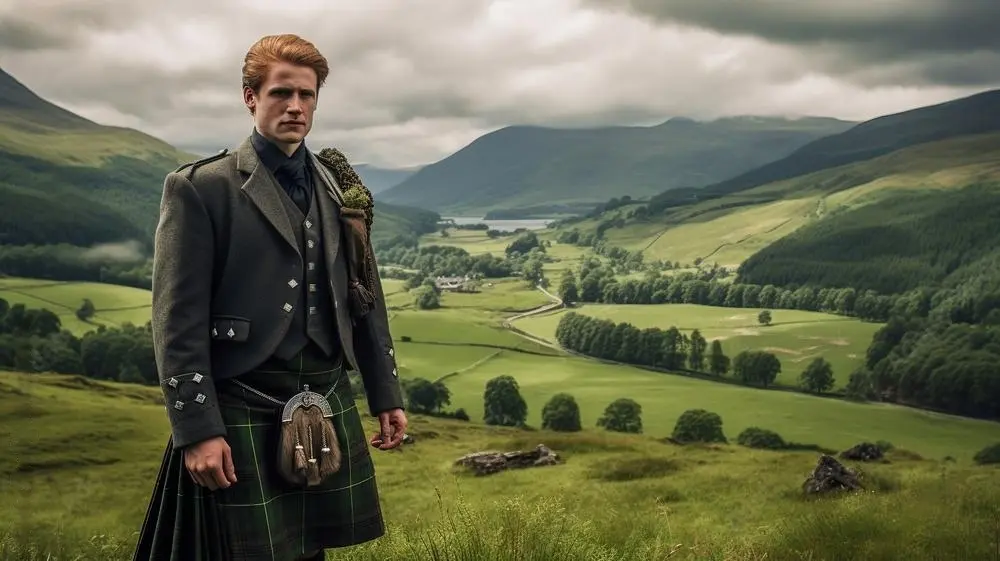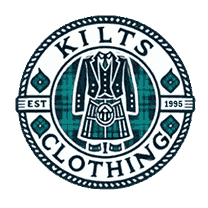Utility Kilt vs Traditional Tartan Kilt: A Comprehensive Comparison

Traditional Kilt are more than just clothing; they are powerful symbols of cultural identity, particularly in Scotland and Ireland. These garments have evolved significantly from the traditional tartan kilts steeped in history to the modern utility kilts designed for practicality.
This blog provides a detailed comparison of traditional tartan kilts and mens utility kilts, focusing on their materials, design, cultural significance, and practical use. Whether choosing a kilt for a wedding, casual wear, or as part of your everyday wardrobe, understanding the key differences will help you make an informed decision.
Introduction to Kilt Clothing
Mens Kilt are iconic garments traditionally associated with Scottish and Irish culture. Initially designed for functionality in the rugged Highlands, kilts have become symbolic of national pride and heritage. Over time, kilts have evolved into two main categories: the traditional tartan kilt, known for its deep cultural roots and ceremonial significance, and the utility kilt, which offers a modern, versatile option for everyday wear. Each type of kilt has its unique characteristics, making it suitable for different occasions and preferences.
Historical Significance of Traditional Tartan Kilts
The traditional tartan kilt is integral to Scottish history, dating back to the 16th century. Originally, the "great kilt" or "belted plaid" was worn, which was a long piece of cloth wrapped around the body and belted at the waist. This garment was practical, providing warmth and protection against the harsh Scottish weather and serving as a blanket or shelter when needed.
By the 18th century, the kilt had evolved into the more recognizable "small kilt" or "walking kilt," worn around the waist and reaching the knees. This version of the kilt became a symbol of Scottish identity, particularly after the Battle of Culloden in 1746 when the British government attempted to suppress Highland culture by banning the wearing of tartans. Despite this, the kilt became even more symbolic of Scottish pride.
Traditional tartan kilts are crafted from wool, chosen for their durability, warmth, and ability to hold pleats. Each kilt is made from a specific tartan pattern, or "sett," representing a Scottish clan, family, or region. Wearing a kilt in a particular tartan is a way to showcase one's heritage and connect with ancestral roots. The creation of a traditional tartan kilt is a meticulous process involving careful measurement, cutting, and pleating to ensure a perfect fit and alignment of the tartan pattern.
The Emergence of Utility Kilts
Utility kilts emerged in the late 1990s as a modern adaptation of the traditional kilt. These kilts were designed to meet the needs of contemporary wearers who appreciate the aesthetic of a kilt but require greater functionality for everyday activities. Mens utility kilt are typically made from materials like cotton, polyester, or canvas, which are durable, easy to maintain, and suitable for a variety of settings.
Unlike traditional tartan kilts, utility kilts are not tied to any specific tartan pattern or cultural heritage. They are usually available in solid colors or simple patterns, appealing to a broader audience. The design of utility kilts incorporates practical features such as large cargo pockets, reinforced stitching, and adjustable waistbands. These features make utility kilts a Working Kilt, casual outings, or any situation where mobility and convenience are important.
Utility kilts reflect a broader trend of blending traditional styles with modern functionality. While they do not carry the same cultural weight as traditional tartan kilts, utility kilts have carved out their niche in contemporary fashion, appealing to those who want the distinctive look of a kilt combined with the practicality needed for everyday life.
Material and Fabric Differences
One of the most significant differences between traditional tartan kilts and utility kilts lies in the materials used to make them.
Traditional Tartan Kilts
Traditional tartan kilts are made from wool, a natural fiber known for its durability, warmth, and breathability. Wool is ideal for kilts because it can be woven into intricate tartan patterns central to the kilt's design. The weight of the wool fabric can vary, with heavier kilts used for formal occasions and lighter kilts for casual or warm-weather wear.
The process of creating a traditional tartan kilt is labor-intensive and requires skilled craftsmanship. The fabric is carefully measured, cut, and pleated to ensure the tartan pattern aligns perfectly. Each kilt is custom-made to the wearer's measurements, ensuring a perfect fit. High-quality wool and attention to detail make traditional tartan kilts a significant investment, often passed down through generations.
Utility Kilts
Utility kilts are made from various modern materials, including cotton, polyester, and canvas. These fabrics are selected for their durability, ease of maintenance, and comfort. Unlike wool, these materials are generally lighter and more breathable, making utility mens kilt suitable for various activities, from manual labor to casual wear.
Utility kilts are designed with practicality in mind. They retain the pleated structure of traditional kilts but incorporate features like cargo pockets, reinforced stitching, and adjustable waistbands. These design elements make utility kilts highly functional, providing storage and ease of movement, which is ideal for active lifestyles.

Design and Aesthetic Variations
The design and aesthetics of traditional tartan and utility kilts reflect their different purposes and the contexts in which they are worn.
Traditional Scottish Kilt Structure
Traditional tartan kilts are designed with a focus on cultural significance and formal appearance. They are typically knee-length, with pleats at the back and a flat front that wraps around the waist. They are fastened with leather straps and buckles, which can be adjusted for a snug fit. The kilt is usually worn with a sporran, a small pouch that serves both a practical and decorative purpose.
The tartan pattern is the most distinctive feature of a traditional kilt. Each tartan is unique and associated with specific Scottish clans, families, or regions. The colors and patterns of the tartan are often chosen to reflect the wearer's heritage, making the kilt a deeply personal garment. In addition to the tartan fabric, traditional kilts may also be adorned with a kilt pin, used to secure the outer layer of the kilt to the inner layer, and a kilt belt, which adds support and decoration.
Traditional kilts are typically worn with specific accessories that enhance their formal appearance. These include kilt jackets, kilt socks (also known as hose), kilt shoes (often brogues), and a sgian-dubh (a small knife traditionally worn in the sock). The overall look is elegant and cultural pride, making traditional tartan kilts the garment of choice for weddings, formal events, and cultural ceremonies.
Utility Kilt Design Features
Utility kilts are designed to focus on functionality and versatility, making them suitable for various activities and environments. While they retain the basic pleated structure of traditional kilts, utility kilts often incorporate modern design elements catering to contemporary needs.
One of the most notable features of utility kilts is the inclusion of large cargo pockets. These pockets are strategically placed to provide ample storage space without sacrificing the kilt's aesthetic appeal. Utility kilts also typically feature reinforced stitching and durable fabrics, ensuring they can withstand the rigors of daily wear and tear. The adjustable waistbands found on many utility kilts provide a flexible fit, accommodating a range of body types and preferences.
Utility kilts are often more subdued in aesthetics than traditional tartan kilts. They are usually available in solid colors or simple patterns, allowing them to be easily paired with other modern clothing items. This makes utility kilts a versatile addition to any wardrobe, suitable for casual and semi-formal occasions. The overall design is practical and useful, appealing to those who value style and functionality in their clothing.
Cultural Significance and Usage
The cultural significance and usage of traditional tartan and utility kilts highlight their different societal roles.
Scottish and Irish Kilt Traditions
Traditional tartan kilts are deeply embedded in Scottish culture. They are often worn during formal events, such as weddings, Highland games, and cultural festivals. They are not just garments but symbols of Scottish identity and heritage. Each tartan pattern tells a story, representing the wearer's clan, family, or region. Wearing a traditional tartan kilt is a way to honor one's ancestry and connect with Scotland's rich history.
In addition to Scotland, kilts also have a place in Irish culture. While the tartan kilt is closely associated with Scotland, the Irish also have kilt traditions. Irish kilts are typically solid-colored, with saffron and green being the most common hues. These kilts are often worn during national events and celebrations, symbolizing Irish pride and identity. The question of whether kilts are Irish often arises. While kilts are primarily associated with Scotland, they play a role in Irish culture, particularly in national dress and cultural events.
Modern Kilt Fashion: Sport Kilts and Beyond
While traditional kilts are often reserved for formal occasions, utility kilts have found their place in modern fashion as versatile and practical garments. Sport kilts, a variation of utility kilts, are designed for active wear and are popular among those who participate in sports or outdoor activities or simply prefer a more casual kilt style. These kilts are lightweight, breathable materials, making them ideal for hiking, running, or playing rugby.
The rise of utility kilts has also led to their adoption in various subcultures and fashion movements. They are often worn at music festivals, Renaissance fairs, and other events where individual expression and alternative fashion are celebrated. Utility kilts offer a way for people to embrace the kilt's aesthetic while enjoying the benefits of modern design and materials. They have become a symbol of versatility and adaptability, appealing to many people, from traditionalists to trendsetters.

Comfort and Fit Considerations
Comfort and fit are crucial when choosing between a traditional tartan and a utility kilt.
Sizing and Tailoring Traditional Kilts
Traditional tartan kilts are typically custom-made to ensure a perfect fit. The process involves precise measurements of the wearer's waist, hips, and desired length, resulting in a kilt that fits comfortably and flatters the wearer's figure. The wool fabric provides warmth and structure, ideal for cooler climates and formal occasions.
The custom tailoring of traditional kilts ensures they are comfortable to wear and maintain shape over time. However, this also means that traditional kilts are less flexible in fit, as they are designed to fit the wearer's specific measurements. This level of craftsmanship and attention to detail makes traditional kilts a significant investment but one that pays off in terms of comfort and durability.
Adjustability in Utility Kilts
Utility kilts often feature adjustable waistbands and are available in standard sizes, making them more accessible to a broader audience. The modern fabrics used in utility kilts are lightweight and breathable, ensuring comfort even in warmer weather. The adjustable fit also allows for greater flexibility, accommodating different body types and preferences.
The adjustability and versatility of utility kilts make them a practical choice for those who want a comfortable and functional garment that can be worn in various settings. Whether you're looking for a kilt for casual wear, work, or outdoor activities, a utility kilt offers a flexible fit that can adapt to your needs.
Conclusion: Choosing Between Utility Kilts and Traditional Tartan Kilts
Traditional tartan and utility kilts offer unique benefits, depending on your needs and preferences. Traditional tartan kilts are ideal for those who want to honor their Scottish or Irish heritage, participate in cultural events, or make a statement at formal occasions. Their craftsmanship, cultural significance, and classic design make them a timeless choice.
Conversely, utility kilts are perfect for those who value practicality, comfort, and versatility in their clothing. Whether for everyday wear, work, or casual outings, utility kilts provide the distinctive look of a kilt with the added benefits of modern design features like pockets and adjustable waistbands.
Choosing between a traditional tartan and a utility kilt depends on personal preference and how you plan to wear it. Both styles have their place in modern fashion, offering something special for those who choose to wear them. Whether embracing tradition or looking for a functional alternative, kilts remain a unique and enduring garment that continues to captivate people worldwide.
FAQs
A kilt is traditionally made of wool and features tartan patterns, while a utility kilt is modern, made from durable materials, and includes practical features like pockets.
A utility kilt offers the style of a traditional kilt with added functionality like pockets, making it ideal for everyday wear, outdoor activities, or work.
Modern kilts, like utility kilts, focus on practicality and versatility, whereas traditional kilts emphasize cultural significance, craftsmanship, and tartan patterns.
Utility kilts are worn by those who appreciate the kilt style but need a practical, versatile garment for work, casual outings, or outdoor activities.
Kilts are primarily associated with Scottish heritage, but they also have a place in Irish culture, particularly with solid-colored kilts.
Men wear utility kilts for comfort, freedom of movement, and the combination of traditional style with modern practicality.

